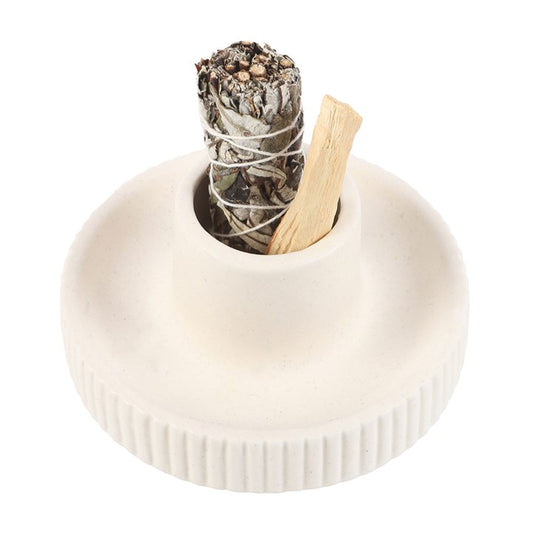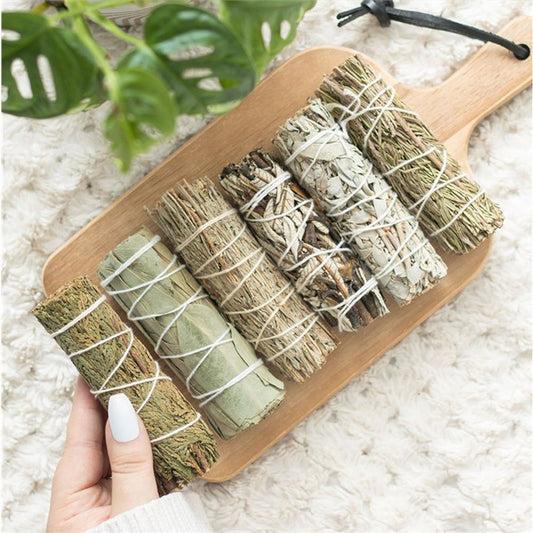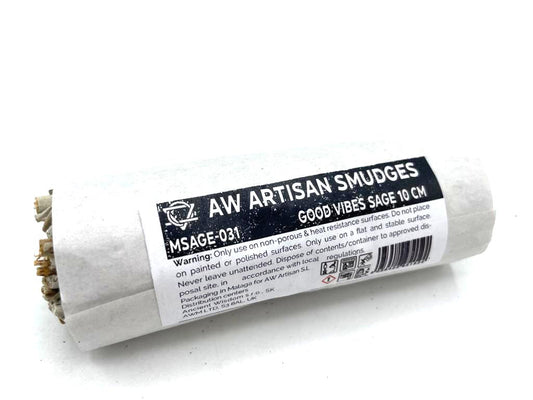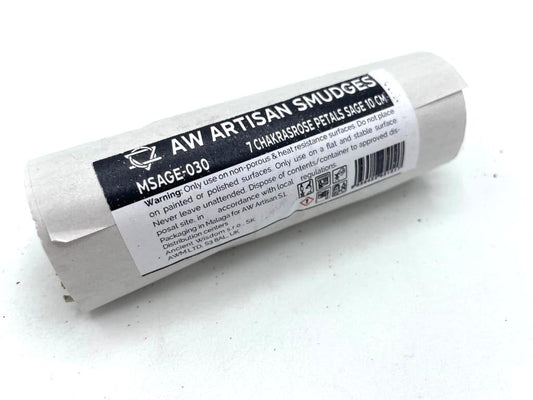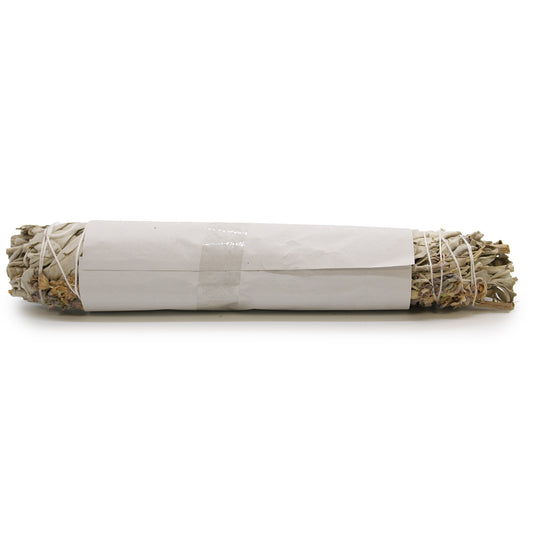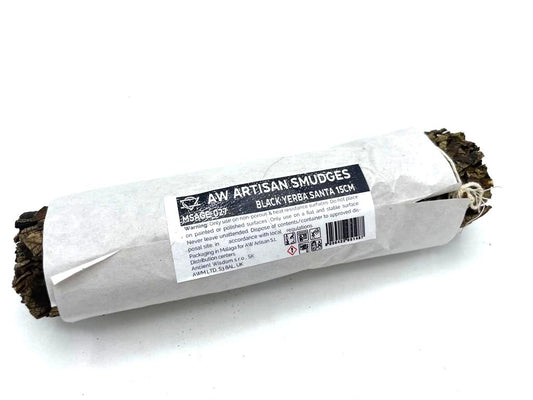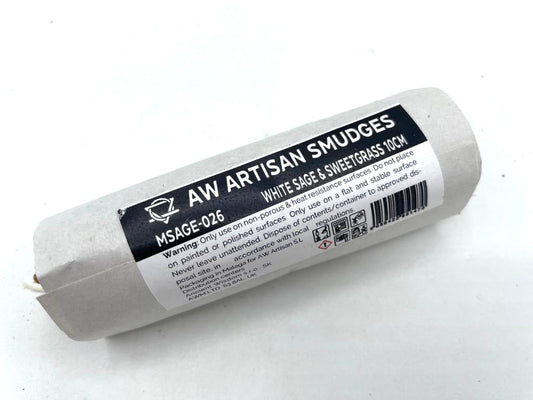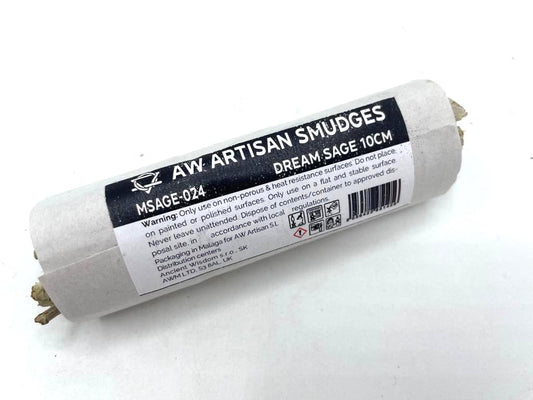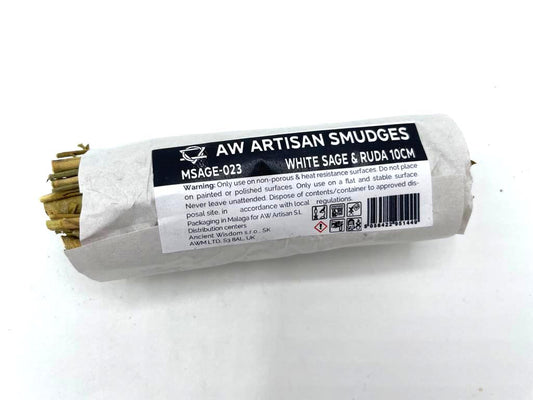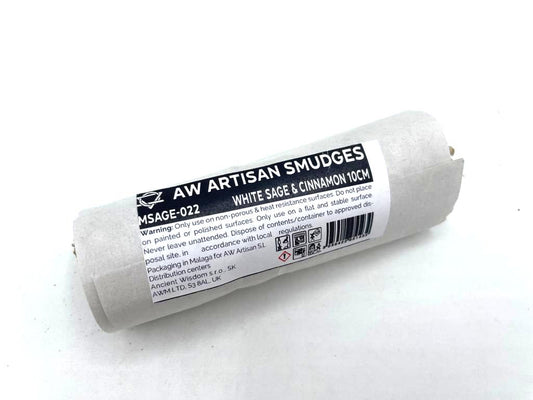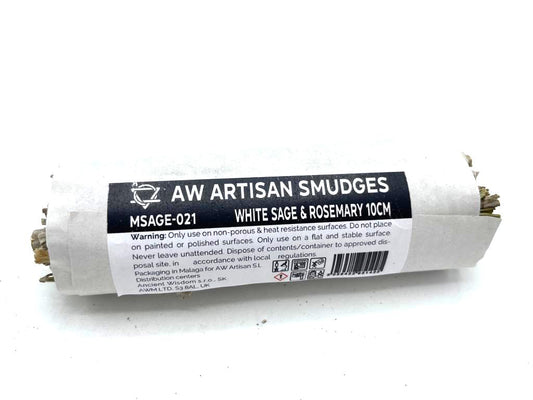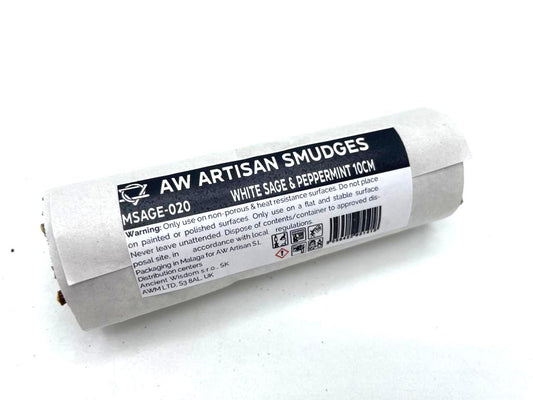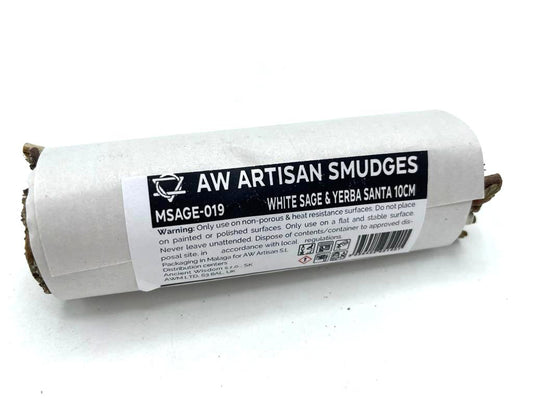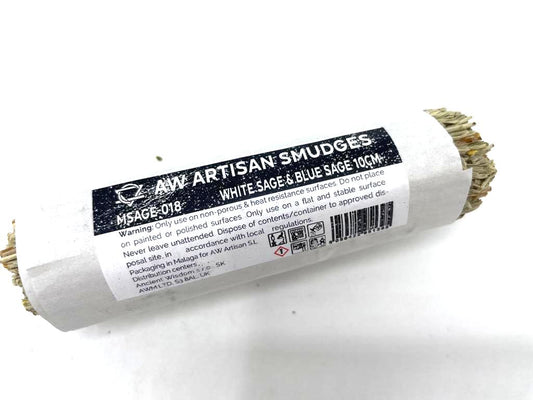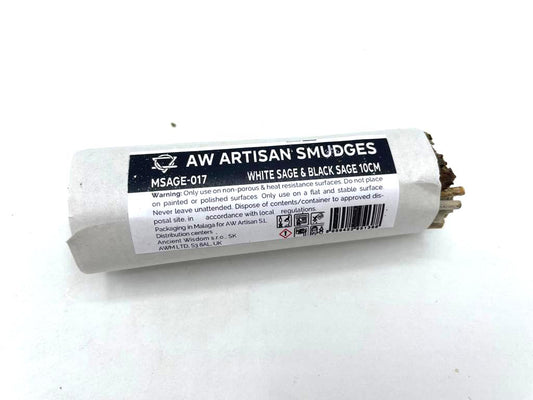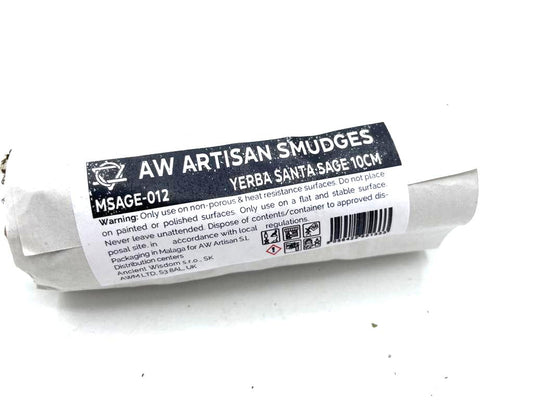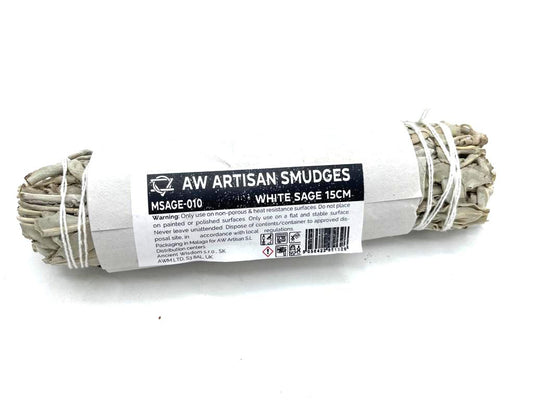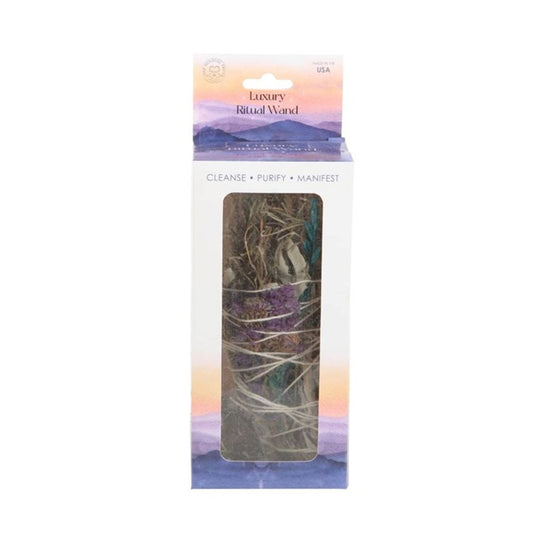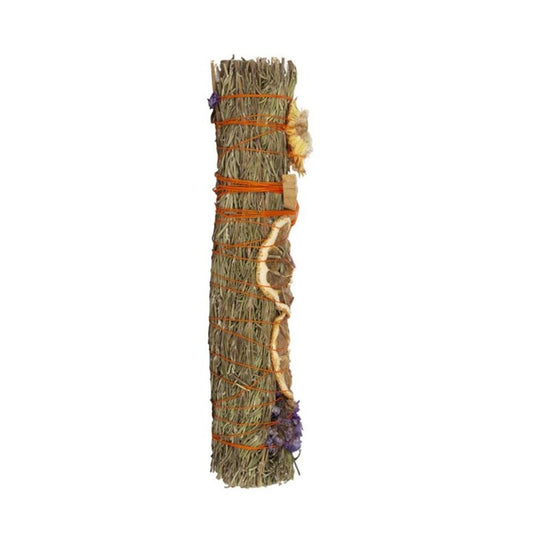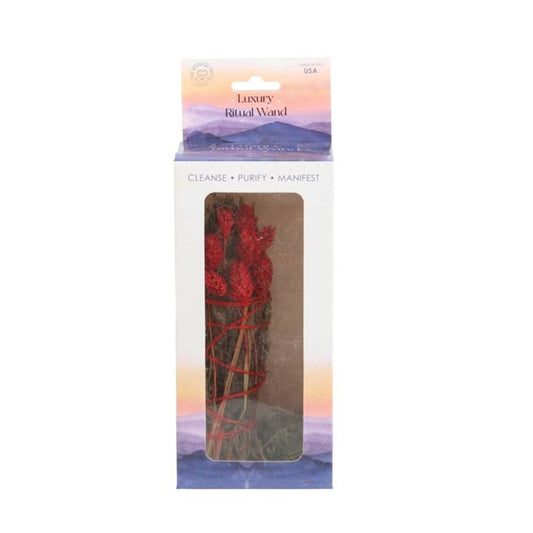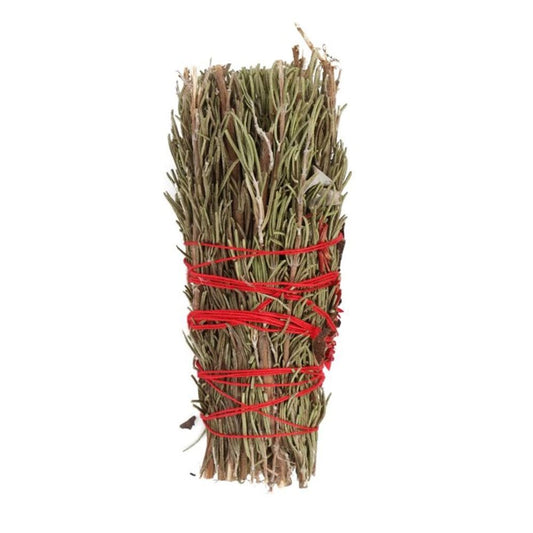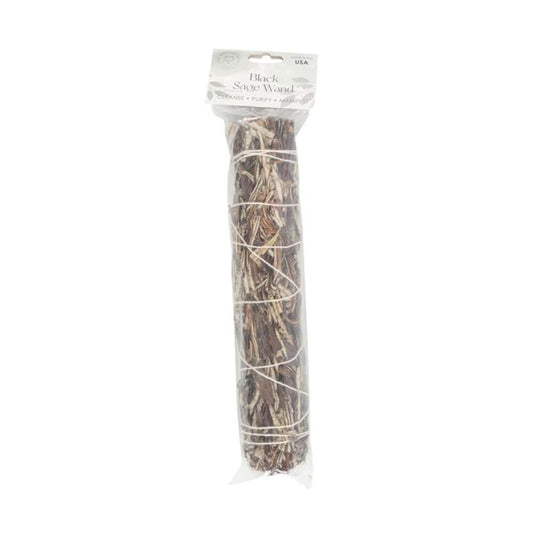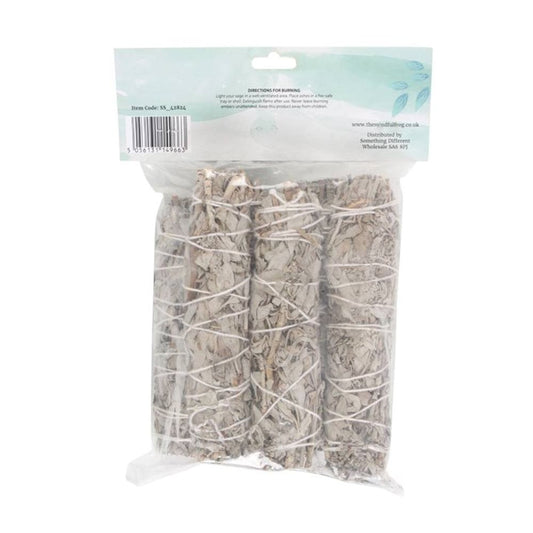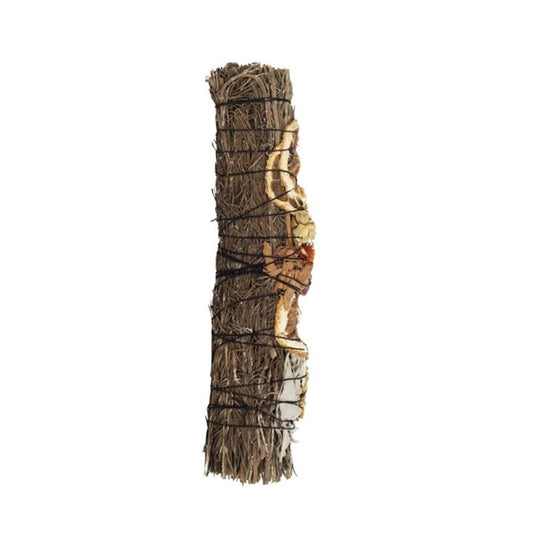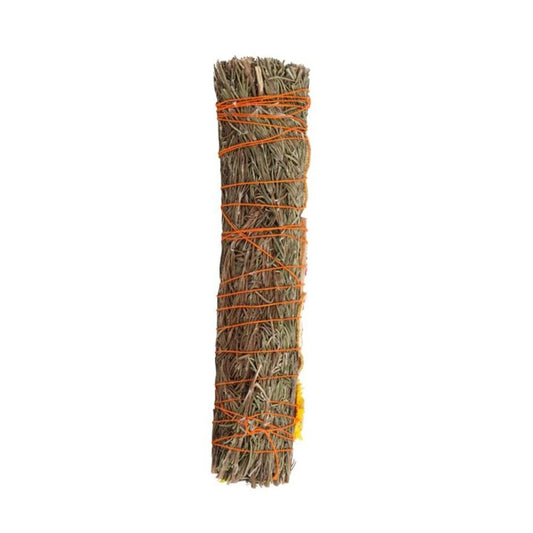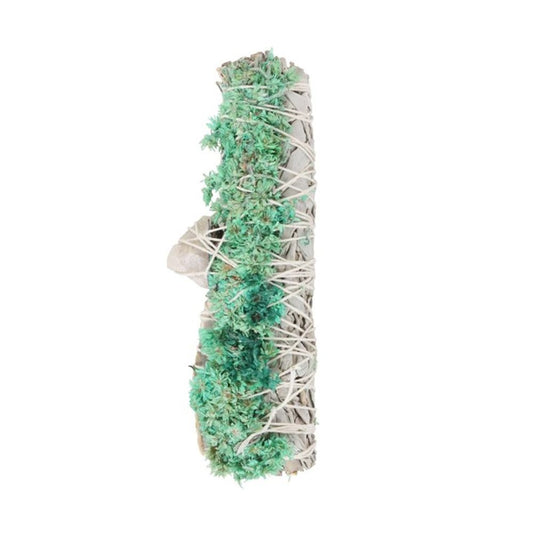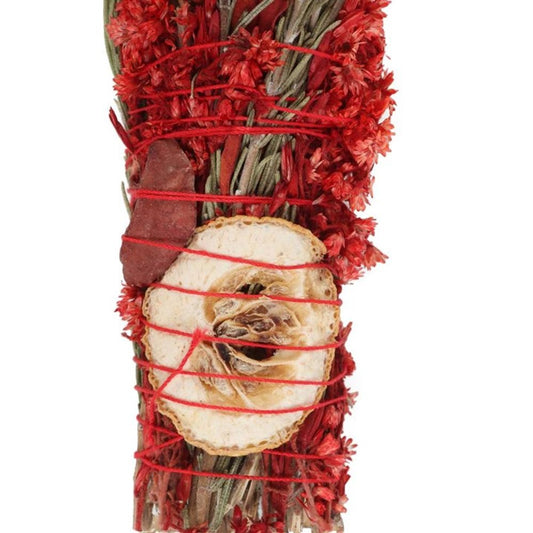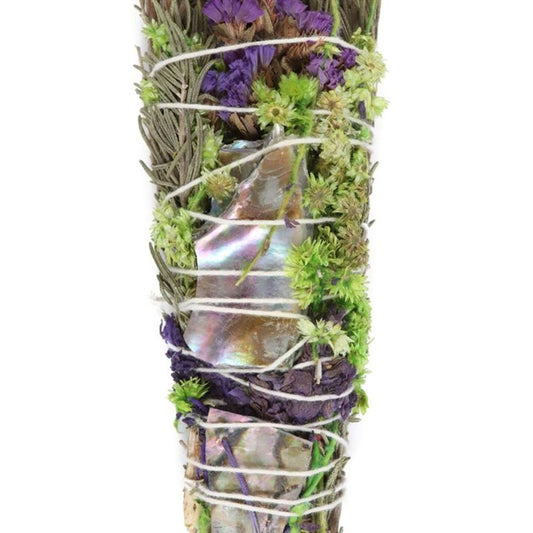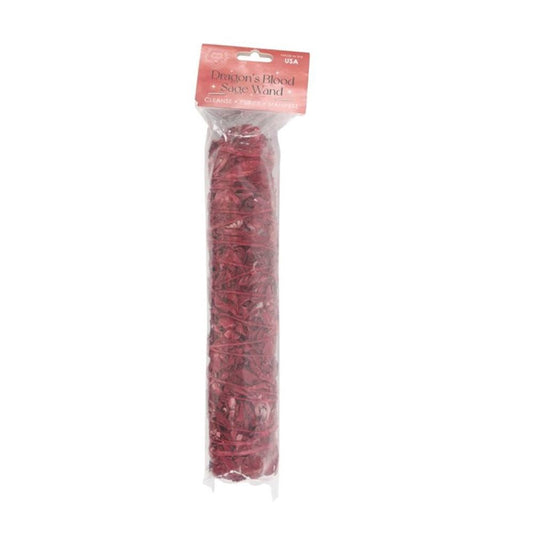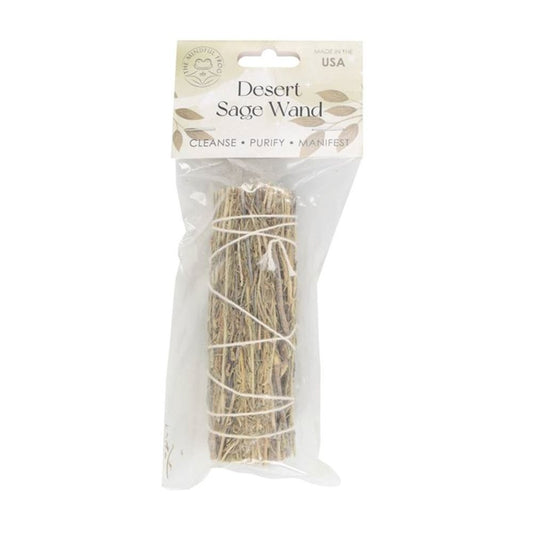Collection: Smudge sticks
Cleanse your space with our handcrafted smudge sticks made from fragrant white sage. These bundles of dried sage are traditionally burned in a smudging ceremony to clear away negative energy and invite in positive vibrations.
The practice of smudging dates back centuries to Native American traditions. The aromatic smoke from burning sage is believed to promote calmness, balance and inner wisdom.
Our sage smudging sticks are ethically sourced and lovingly bound with cotton twine. Light the tip to release the sacred sage smoke. Wave the stick around you in a clockwise motion or place in a fire-safe bowl to fill your home with good energy. Smudging with white sage is ideal before meditation or just when your environment needs clearing.
Discover the serene scent and purifying power of sage with our quality smudge sticks today.
-
Cream Ribbed Smudge Bowl
Regular price £10.95Regular priceUnit price / per -
Sage Smudge Stick Variety Set
Regular price £31.95Regular priceUnit price / per -
Smudge Stick - Good Vibes sage 10 cm
Regular price £11.52Regular priceUnit price / per -
Smudge Stick - 7 Chakras Rose Petals Sage 10 cm (Chakra)
Regular price £11.52Regular priceUnit price / per -
Smudge Stick - White Sage & Lavender 22.5cm
Regular price £25.05Regular priceUnit price / per -
Smudge Stick - Dragonsblood 15cm
Regular price £19.65Regular priceUnit price / per -
Smudge Stick - Black Sage 15cm
Regular price £13.32Regular priceUnit price / per -
Smudge Stick - White Sage & Sweetgrass 10cm
Regular price £11.88Regular priceUnit price / per -
Smudge Stick - Lavender Sage 10cm
Regular price £11.16Regular priceUnit price / per -
Smudge Stick - Dream Sage 10cm
Regular price £11.16Regular priceUnit price / per -
Smudge Stick - White Sage & Ruda 10cm
Regular price £11.16Regular priceUnit price / per -
Smudge Stick - White Sage & Cinnamon 10cm
Regular price £11.16Regular priceUnit price / per -
Smudge Stick - White Sage & Rosemary 10cm
Regular price £11.16Regular priceUnit price / per -
Smudge Stick - White Sage & Peppermint 10cm
Regular price £11.16Regular priceUnit price / per -
Smudge Stick - White Sage & Yerba Santa 10cm
Regular price £11.16Regular priceUnit price / per -
Smudge Stick - White Sage & Blue Sage 10cm
Regular price £11.16Regular priceUnit price / per -
Smudge Stick - White Sage & Black Sage 10cm
Regular price £11.16Regular priceUnit price / per -
Smudge Stick - Yerba Santa Sage 10cm
Regular price £7.92Regular priceUnit price / per -
Smudge Stick - White Sage 15cm
Regular price £16.92Regular priceUnit price / per -

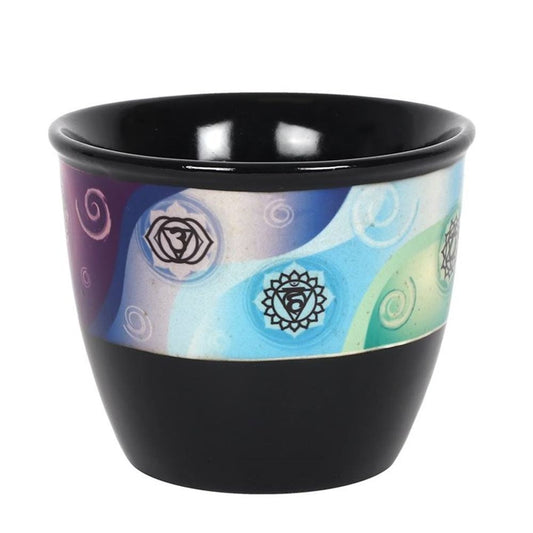 Sold out
Sold out13cm Chakra Smudge Bowl
Regular price £18.95Regular priceUnit price / per -
6in Ritual Wand Smudge Stick with Rosemary, Sage and Aventurine
Regular price £18.95Regular priceUnit price / per -
9in Ritual Wand Smudge Stick with Rosemary, Lavender, and Orange
Regular price £22.95Regular priceUnit price / per -
6in Ritual Wand Smudge Stick with Rosemary and Yerba Santa Sage
Regular price £19.95Regular priceUnit price / per -
6in Ritual Wand Smudge Stick with Rosemary and Red Flowers
Regular price £18.95Regular priceUnit price / per -
22.5cm Large Black Sage Smudge Stick Wand
Regular price £12.95Regular priceUnit price / per -
Pack of 6 15cm Medium White Sage Smudge Stick Wands
Regular price £45.95Regular priceUnit price / per -
9in Ritual Wand Smudge Stick with Rosemary, Palo Santo and Red Jasper
Regular price £22.95Regular priceUnit price / per -
9in Ritual Wand Smudge Stick with Rosemary, Palo Santo and Quartz
Regular price £22.95Regular priceUnit price / per -
10cm Small Blue Sage Smudge Stick Wand
Regular price £9.95Regular priceUnit price / per -
6in Ritual Wand Smudge Stick with White Sage, Abalone and Quartz
Regular price £19.95Regular priceUnit price / per -
15cm Medium White Sage Smudge Stick Wand
Regular price £10.95Regular priceUnit price / per -
6in Ritual Wand Smudge Stick with Rosemary, Sage and Red Jasper
Regular price £18.95Regular priceUnit price / per -
6in Ritual Wand Smudge Stick with Rosemary, Lavender and Abalone
Regular price £17.95Regular priceUnit price / per -
22.5cm Large Dragons Blood Smudge Stick Wand
Regular price £13.95Regular priceUnit price / per -
10cm Small White Sage Smudge Stick Wand
Regular price £9.95Regular priceUnit price / per -
10cm Small Desert Sage Smudge Stick Wand
Regular price £8.95Regular priceUnit price / per

Elevate Your Mood With Aromatherapy Essentials
Discover the power of aromatherapy to cleanse and uplift your surroundings. From calming essential oils to refreshing sprays, our collection is designed to enrich your space and spirit. Perfect for enhancing your smudging rituals or daily relaxation.
Smudge sticks
Smudging FAQs
What is smudging?
Smudging is a ceremonial practice in some indigenous cultures that involves burning sacred herbs and plants to produce smoke that is believed to have cleansing and healing properties. Some key points about smudging:
- It is traditionally done by indigenous groups like Native Americans, First Nations, Métis, and Inuit peoples. The most common smudge ingredient used is sage, but other plants like cedar, sweetgrass, and tobacco may also be used.
- The smoke from the smoldering herbs is fanned using a feather or other tool and directed over people, objects, or spaces. This is believed to clear negative energy, purify, and protect.
- Smudging is often done at the start of sacred ceremonies, to consecrate spaces like homes or sweat lodges, or for cleansing purposes like before hunting or after dealing with grief/sickness.
- The practice has spiritual significance, connecting users to tradition and ancestors. The smoke represents prayers rising up. Many see it as medicinal due to the herbs' aromatherapeutic effects.
- Smudging remains controversial today as some argue it violates secular laws/practices in public spaces or environments like workplaces. However, many indigenous people consider it an essential spiritual tradition and human right.
In summary, smudging is a ritual cleansing and purification practice using sacred smoke that remains an important indigenous cultural tradition. Appropriation of the practice and ceremonies should be avoided out of respect.
Is smudging safe?
There are some safety tips like ensuring proper ventilation and avoiding overly frequent use. Certain herbs may cause reactions for some. Proper fire safety is also important.
How often should you smudge?
Frequency varies by need and practice, ranging from daily to for specific occasions. Some smudge an area or self routinely for maintenance.
Do you smudge a new house?
Yes, smudging is commonly done when moving into a new home to cleanse the energy and claim the space.
How do you light and use a smudge stick?
You light the end until it starts smoking, then blow out any flames. The smoke is fanned around the space/person using a feather or your hand.
What plants are used to make smudge sticks?
Different plants have different symbolic meanings, but common ones are sage, cedar, sweetgrass, lavender, mugwort, etc. Sage is most traditional.
Why use smudge sticks vs. loose herbs?
Smudge sticks (herbs bound together) allow the herbs to smolder slowly and create steady, thick smoke. They're easier to use than loose herbs.
What is a smudge stick used for?
Smudge sticks are bundles of dried herbs and plants that are burned to produce cleansing smoke in various spiritual and ceremonial practices. Some common uses and purposes of smudge sticks include:
- Purification - The smoke from burning smudge sticks is believed to clear away negative energy, unwanted spirits, emotional blockages, and more. It's seen as a purifying agent.
- Cleansing - Smudging is often done to cleanse a person, space, or object of spiritual impurities or unwanted energies before rituals, ceremonies, or everyday use.
- Blessing - The smoke can be used to bless people, homes, sacred objects, etc. Some smudge as a means of conveying positive intentions.
- Healing - In some indigenous practices, the smoke from certain herbs is thought to have healing properties, especially in rituals for treating illness.
- Prayer - The rising smoke represents prayers and intentions being carried up to the spirit world or deities.
- Protection - Smudging may be done to protect a space, home, or person from unwanted energies or spirits.
- Tradition - Smudging connects people to their ancestral and cultural practices and maintains spiritual traditions.
- Ceremonies - Smudge sticks are common in ceremonies like sweat lodge rituals, weddings, funerals, naming ceremonies, and more.
So in summary, smudge sticks are primarily used to purify, cleanse, and bless people, places, objects and the energies surrounding them within the contexts of indigenous spiritual traditions. The smoke carries the prayers and intentions.
Home Decor Inspiration
View all-

Ultimate Guide to Creating Cosy in Your Home
Discover essential tips for creating a cosy home with our guide on colour theory, lighting, textures, and space organisation. Learn DIY projects, product recommendations, and eco-friendly practices to enhance comfort...
Ultimate Guide to Creating Cosy in Your Home
Discover essential tips for creating a cosy home with our guide on colour theory, lighting, textures, and space organisation. Learn DIY projects, product recommendations, and eco-friendly practices to enhance comfort...
-

The Best Plants for Your Bohemian Home - A Comp...
Discover the best plants for Bohemian decor, including care tips and styling ideas to create a lush, eclectic home vibe. Explore layering, natural materials, green corners, and more to enhance...
The Best Plants for Your Bohemian Home - A Comp...
Discover the best plants for Bohemian decor, including care tips and styling ideas to create a lush, eclectic home vibe. Explore layering, natural materials, green corners, and more to enhance...
-

Crafting a Bohemian Bedroom Oasis on a Budget
Embracing Bohemian Elegance Bohemian style, known for its eclectic and artistic flair, can also be a uniquely personal and cost-effective approach to bedroom design. This article explores various budget-friendly techniques...
Crafting a Bohemian Bedroom Oasis on a Budget
Embracing Bohemian Elegance Bohemian style, known for its eclectic and artistic flair, can also be a uniquely personal and cost-effective approach to bedroom design. This article explores various budget-friendly techniques...

